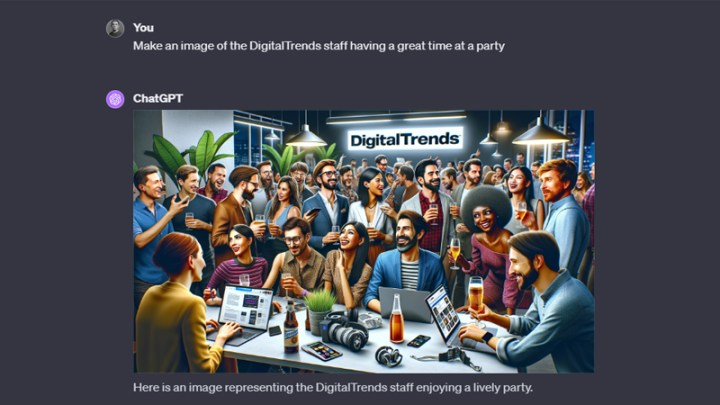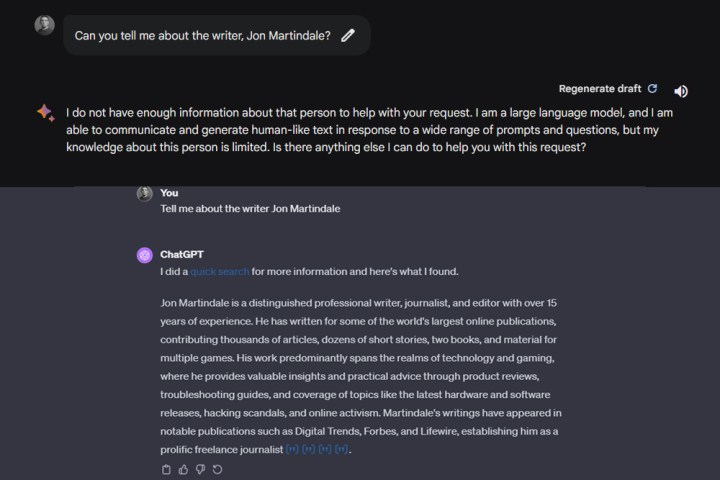Google’s Gemini artificial intelligence and OpenAI’s ChatGPT that uses the GPT-4 model are two of the most advanced artificial intelligence (AI) solutions available today. They can comprehend and interact with text, images, video, audio, and code, as well as output various alterations of each. they also provide expertise that would cost a lot to replicate with an expert human.
But if you’re weighing which tool to put your time and energies into learning how to use, you want to pick the best one. Which is the more capable AI tool? Gemini or GPT-4?
Availability and pricing

Both GPT-4 and Google Gemini are available now in one form or another. Gemini Pro is freely available through Bard, and has been since December 6, 2023 — you just need a Google account to use it.
You can use GPT 3.5 (and depending on availability, sometimes GPT-4) through Microsoft’s Bing Chat, and there are some tools that let you use GPT-4 for free in a limited capacity, but the main way to use it is through ChatGPT.
It’s also important to note that while Gemini Pro is an effective form of the AI, it isn’t the final form. Google has promised that Gemini Ultra will be released later and will be the most capable of its AI solutions. It has also launched Gemini Nano, which runs locally on some smartphones and has a reduced feature set — it’s primarily used to power text summary and proofreading tools.
What can they do?
The main feature sets of Gemini and GPT-4 are very similar. Both can interact with and interpret text, images, videos, audio, and code, allowing you to use them for a wide range of tasks. You can have general conversations or ask questions of both chatbots, have them look at a picture of your cupboard ingredients and suggest a recipe based on it, estimate how many people are in a video of a crowd, or make suggestions for how to streamline your code to make it more efficient.
Both AI can be augmented with additional extensions, though at the time of writing, Google’s are more limited. Gemini can utilize Google Flights, Hotels, Maps, YouTube, and Google’s range of Workspace applications, letting you interact with documents, find live data on flights and hotels, and more.
However, OpenAI’s GPT-4 has a much greater array of plug-ins and extensions, most produced by third parties. While some of those capabilities are being rolled into
In terms of customization, GPT-4 holds an edge on Gemini here as well. It lets you create custom versions of
GPT-4 can also create images on the fly. While Gemini is designed to do that, it’s not something it’s capable of just yet.

Response time is clearly faster with Gemini, however. While GPT-4 has lulls where the sheer number of users can cause
Both tools give you the option to fact-check them in some manner. GPT-4 provides source links for claims it makes at the end of its responses, while Gemini has a button that lets you perform a Google search for the information you’re looking for to confirm it yourself.
Which is better, Gemini or GPT-4?
When Google launched Gemini, it highlighted how its Pro model could beat GPT-4 in a range of AI-based applications and benchmarks, including in reasoning capability. However, testing this in the real world is far more difficult, with both AIs displaying impressive responses to the same prompts, whether it’s for text, images, video, or coding.
I’ve personally found both AIs useful when asking questions about game coding, and both function well as conversational chatbots. Gemini seems to be programmed to steer clear of discussion about or interactions with images of certain people, however. It refused to identify the clothing of a celebrity I showed it, and when asked about yours truly, it couldn’t tell me much. GPT-4 had no such problems.

While I was given the option to use Google to double-check other responses, Gemini didn’t use Google to find information about me, as GPT-4 did with Bing, nor did it give me the option to fact-check it.
With all that in mind, at the time of writing, GPT-4 feels like it holds an edge. It’s a more complete tool, with greater capabilities through plug-ins and custom chatbots. Gemini feels equally capable in terms of raw ability, and it responds very fast, but it doesn’t quite have the feature set. Gemini Ultra holds much promise, but we’ll need to wait to see how available that integration of Google’s AI is before commenting further.
Editors' Recommendations
- Google Drive vs. Dropbox: which is best in 2024?
- Google’s AI just got ears
- Apple finally has a way to defeat ChatGPT
- ChatGPT AI chatbot can now be used without an account
- OpenAI needs just 15 seconds of audio for its AI to clone a voice




